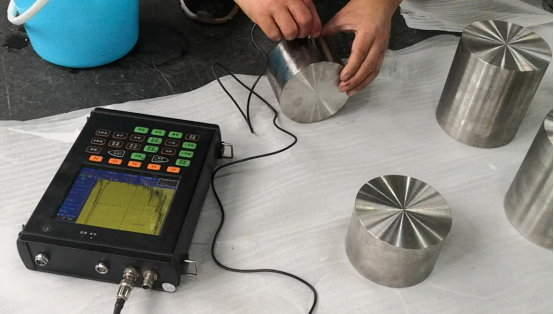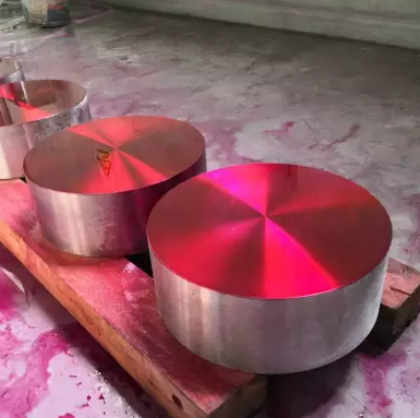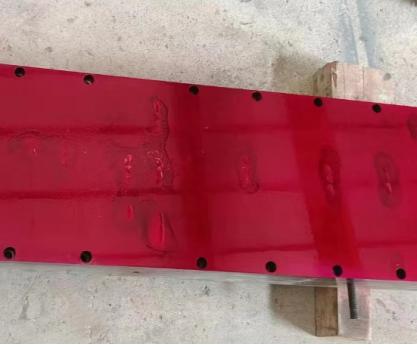Flaw detection is an essential process in the processing of titanium materials. As long as the finished product leaves the factory, it will be inspected. To prevent internal defects in titanium materials, there are different requirements for inspection levels according to customer requirements and product standards:

At present, the most commonly used is: ultrasonic inspection.
Ultrasonic inspection is a sound-based inspection method that can detect internal defects of welded parts, such as pores, cracks, inclusions and pores. The principle of ultrasonic detection is to use ultrasonic propagation speed and reflection mode in different materials to detect defects, through the measurement of the relative change signal and amplitude, ultrasonic detection can be used to measure the size of the material or weld defects or attenuation. Color detection is a vision-based inspection method, which is suitable for detecting surface defects such as cracks, inclusions and burrs.
Spray the penetrant evenly on the welding surface, penetrate for 10-15 minutes, and clean the penetrant. Then the developer is applied, and the developer is applied thinly and evenly for 7 to 10 minutes. White light illumination should be greater than 1000Lx to identify defects by visual or microscopic observation. Second, the advantages and disadvantages of color detection and ultrasonic detection

1. Disadvantages of color detection
Color inspection operation is more troublesome, and only surface defects can be detected, and deep defects cannot be found.
2. Advantages and disadvantages of ultrasonic inspection
Ultrasonic inspection can detect internal defects of welded parts with higher accuracy, depth and reliability. However, ultrasonic inspection requires professional technicians and expensive equipment, and the cost is high.

Iii. Summary
In the production process of titanium materials, color inspection and ultrasonic inspection are common non-destructive testing methods. Color detection mainly detects surface cracks and burrs and other defects, while ultrasonic detection can detect high-precision defects inside the welding, with higher accuracy, depth and reliability. In practical applications, the appropriate detection method can be
selected according to the situation to ensure that the product meets customer requirements.